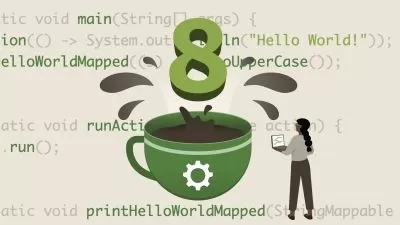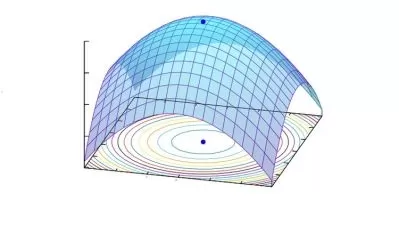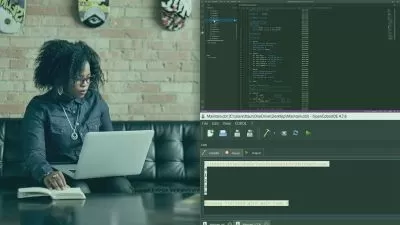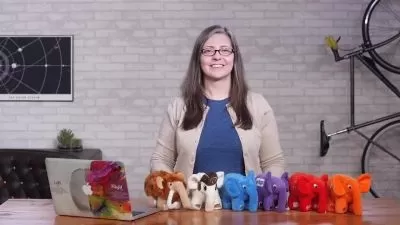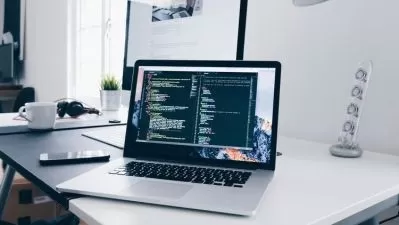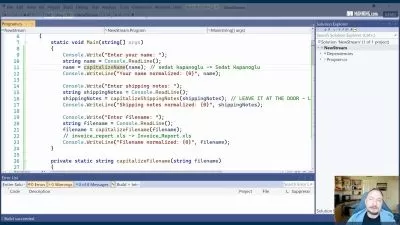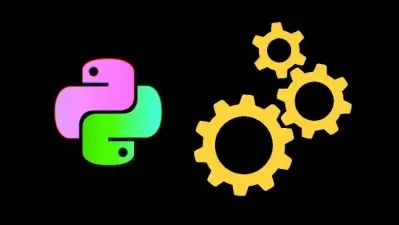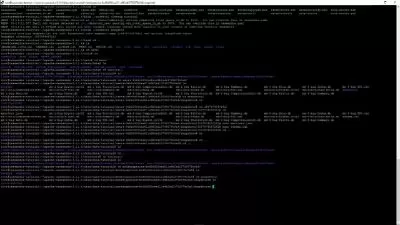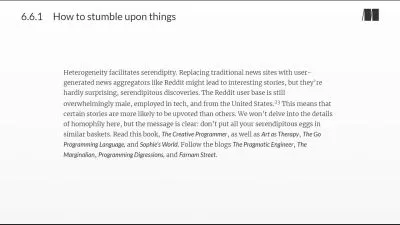Write clean code: 20 code smells and how to get rid of them
Lauro Fialho Müller
5:58:53
Description
Improve your software design skills by learning 20 common code anti-patterns and techniques to eliminate them!
What You'll Learn?
- Apply the fundamental principles of good software design: Encapsulation, abstraction, polymorphism, among others.
- Understand the SOLID principles of software engineering and how to use them to design better code
- Acquire practical skills to improve the quality and the design of
- Learn how to fix the most common pitfalls of Object Oriented Programming
- Learn how to design highly maintainable, extensible, and easy-to-change code
Who is this for?
What You Need to Know?
More details
DescriptionBRING YOUR SOFTWARE DEVELOPMENT SKILLS TO THE NEXT LEVEL!
Learn the SOLID principles and how they can improve the design of your code
Learn 20 code smells and anti-patterns against best software design practices
Learn how to write code that is easy to maintain, extend, and change
Explore practical examples in a variety of applications
Benefit from deep dives and detailed discussions around best practices in the software engineering industry
A STEP-BY-STEP COURSE, FORÂ BEGINNERSÂ ANDÂ ADVANCEDÂ DEVELOPERS:
This course is thought for both those who are starting their software development carriers and want to learn how to design SOLID code from the start, as well as for those who are in the industry for several years and want to improve their coding!
6 hours of high-quality, straight-to-the-point videos
Self-paced course: take as much time as you need to complete the course
Lifetime access: access does not expire. Ever!
30-day money-back guarantee: try the course without risks. No questions asked
Certificate of completion: receive a solid proof of completion and differentiate yourself
WHYÂ THISÂ COURSE?
Focus on the fundamental principles of software design: Information Hiding, Encapsulation, Abstraction, and Polymorphism.
Detailed and easy to follow discussion on 5 SOLID principles: Single Responsibility principle, Open-Close principle, Liskov Substitution principle, Interface Segregation principle, and Dependency Inversion principle.
20 code smells distilled and thoroughly explained: learn many different ways we can fix our code, making it more robust and easier to work with.
At the end of this course, you will have acquired not only knowledge about the principles of great software development, but also practical insight into how to reason about the design of your system and how to improve it.
WHY LEARNÂ SOLIDÂ PRINCIPLESÂ ANDÂ CODEÂ SMELLS?
Excelling in software development goes far beyond writing code. The code we write must not only achieve its intended functionality, but it must also be easy to maintain, extend, and change. When our code is not well designed, it starts to show several symptoms called code smells. It is crucial to be fully aware of them to immediately address the underlying causes when we come across bad code.
To develop this awareness, this course discusses the most important principles for designing and developing systems that comply with programming best practices. The contents are based on my learnings from multiple years of coding experience, as well as on several books and resources from seasoned developers in the industry.
I’m looking forward to taking this journey with you!
Course thumbnail credits: macrovector - freepik
Who this course is for:
- Software developers aiming at expanding their knowledge on SOLID principles and good software design practices
- Everyone who is curious about the principles and practices of designing solid systems
- Software developers and engineers who want to bring their coding skills to the next level by learning how to develop clean, maintainable systems
BRING YOUR SOFTWARE DEVELOPMENT SKILLS TO THE NEXT LEVEL!
Learn the SOLID principles and how they can improve the design of your code
Learn 20 code smells and anti-patterns against best software design practices
Learn how to write code that is easy to maintain, extend, and change
Explore practical examples in a variety of applications
Benefit from deep dives and detailed discussions around best practices in the software engineering industry
A STEP-BY-STEP COURSE, FORÂ BEGINNERSÂ ANDÂ ADVANCEDÂ DEVELOPERS:
This course is thought for both those who are starting their software development carriers and want to learn how to design SOLID code from the start, as well as for those who are in the industry for several years and want to improve their coding!
6 hours of high-quality, straight-to-the-point videos
Self-paced course: take as much time as you need to complete the course
Lifetime access: access does not expire. Ever!
30-day money-back guarantee: try the course without risks. No questions asked
Certificate of completion: receive a solid proof of completion and differentiate yourself
WHYÂ THISÂ COURSE?
Focus on the fundamental principles of software design: Information Hiding, Encapsulation, Abstraction, and Polymorphism.
Detailed and easy to follow discussion on 5 SOLID principles: Single Responsibility principle, Open-Close principle, Liskov Substitution principle, Interface Segregation principle, and Dependency Inversion principle.
20 code smells distilled and thoroughly explained: learn many different ways we can fix our code, making it more robust and easier to work with.
At the end of this course, you will have acquired not only knowledge about the principles of great software development, but also practical insight into how to reason about the design of your system and how to improve it.
WHY LEARNÂ SOLIDÂ PRINCIPLESÂ ANDÂ CODEÂ SMELLS?
Excelling in software development goes far beyond writing code. The code we write must not only achieve its intended functionality, but it must also be easy to maintain, extend, and change. When our code is not well designed, it starts to show several symptoms called code smells. It is crucial to be fully aware of them to immediately address the underlying causes when we come across bad code.
To develop this awareness, this course discusses the most important principles for designing and developing systems that comply with programming best practices. The contents are based on my learnings from multiple years of coding experience, as well as on several books and resources from seasoned developers in the industry.
I’m looking forward to taking this journey with you!
Course thumbnail credits: macrovector - freepik
Who this course is for:
- Software developers aiming at expanding their knowledge on SOLID principles and good software design practices
- Everyone who is curious about the principles and practices of designing solid systems
- Software developers and engineers who want to bring their coding skills to the next level by learning how to develop clean, maintainable systems
User Reviews
Rating
Lauro Fialho Müller
Instructor's Courses
Udemy
View courses Udemy- language english
- Training sessions 70
- duration 5:58:53
- English subtitles has
- Release Date 2024/05/14






